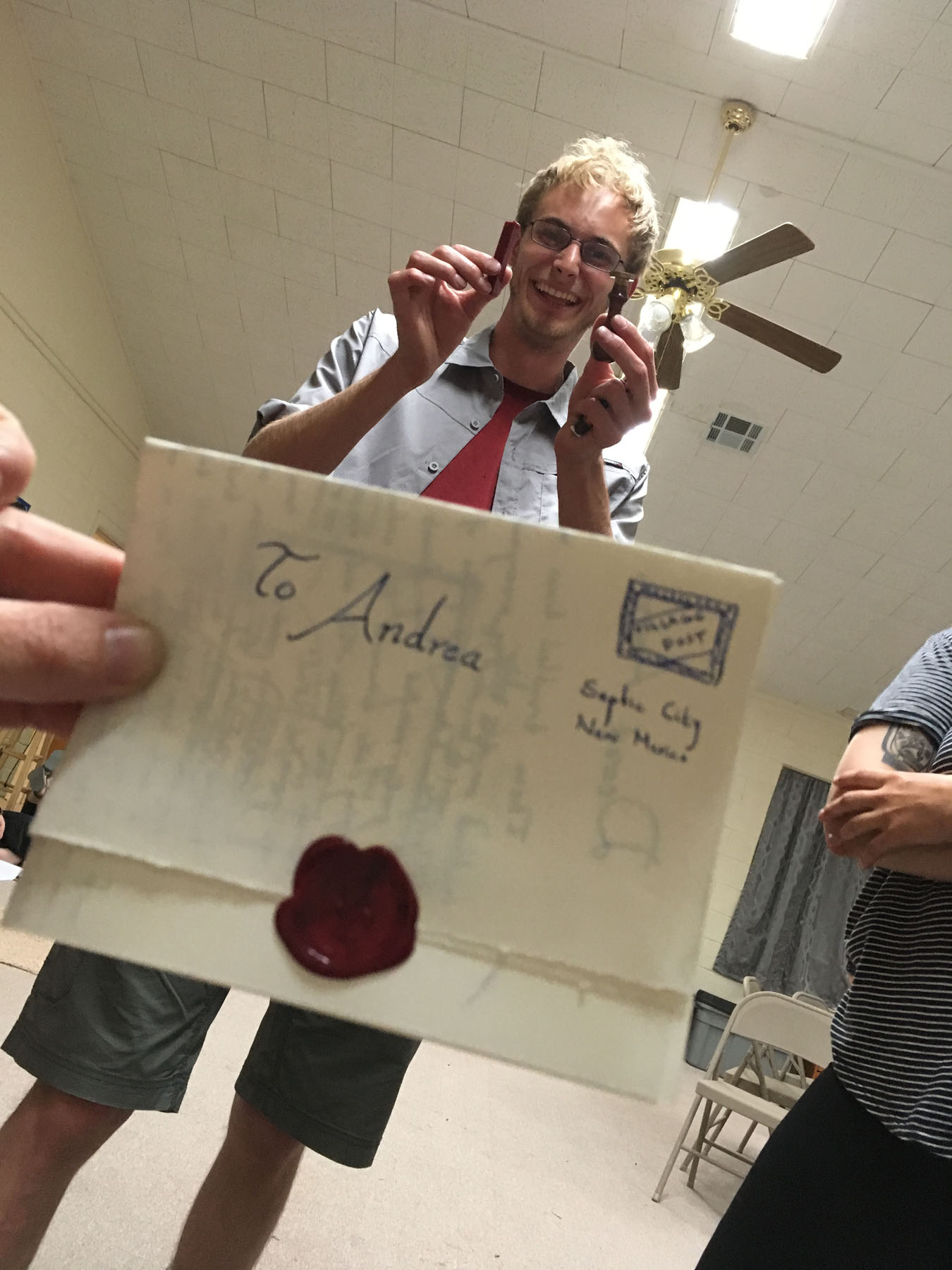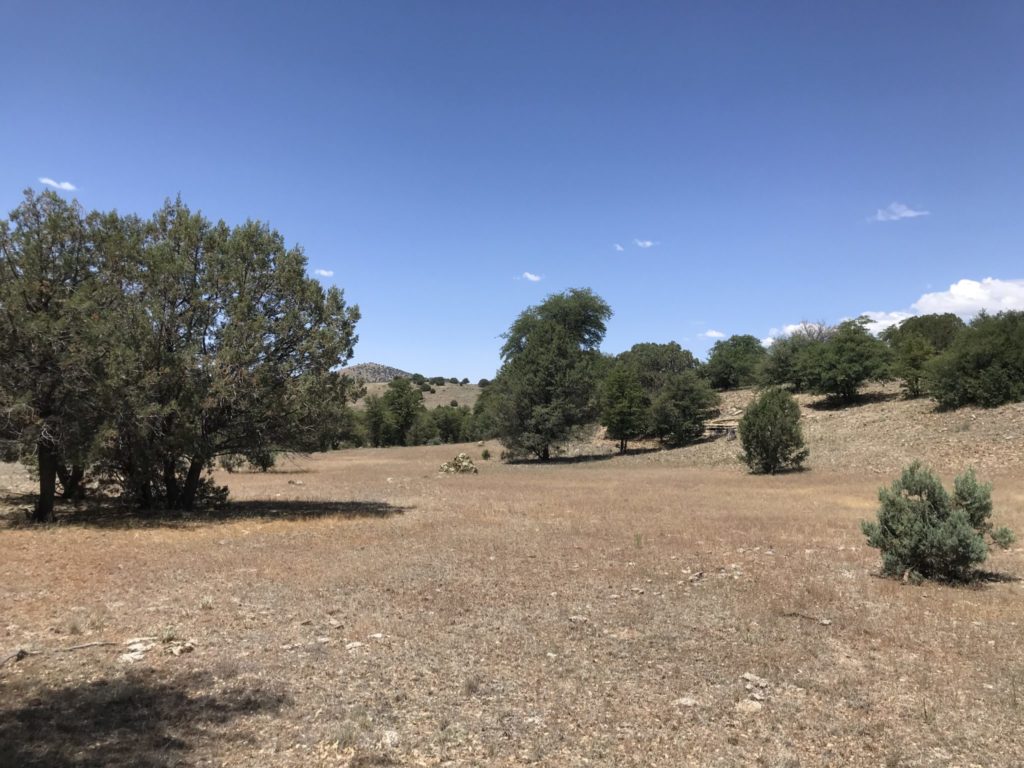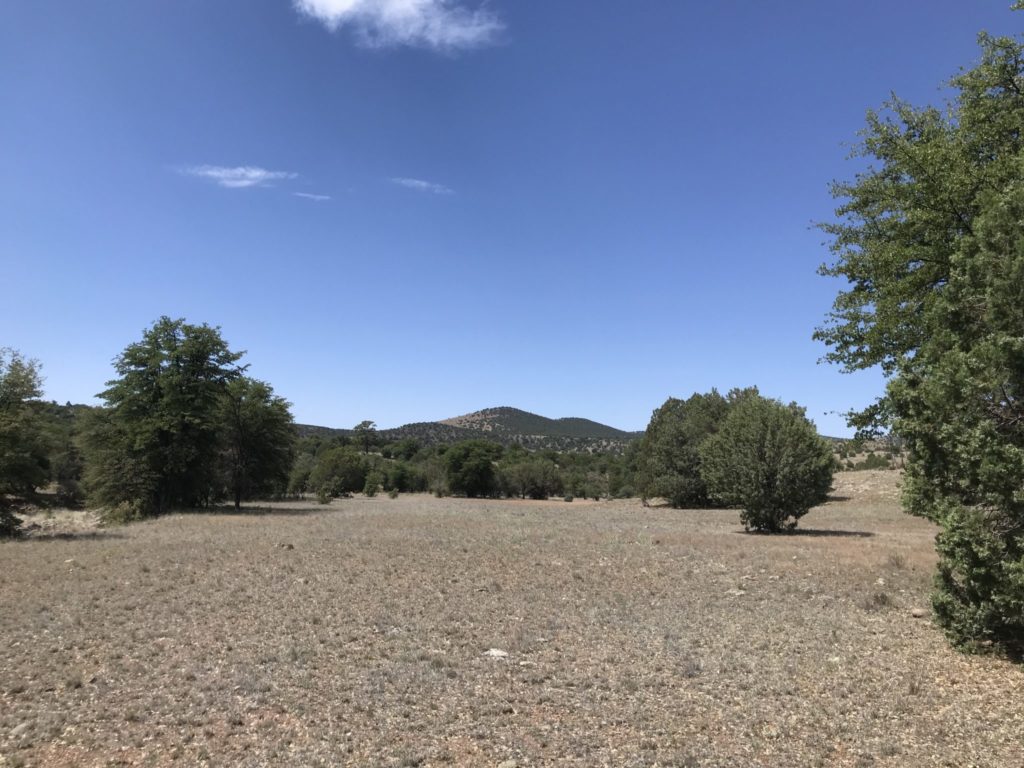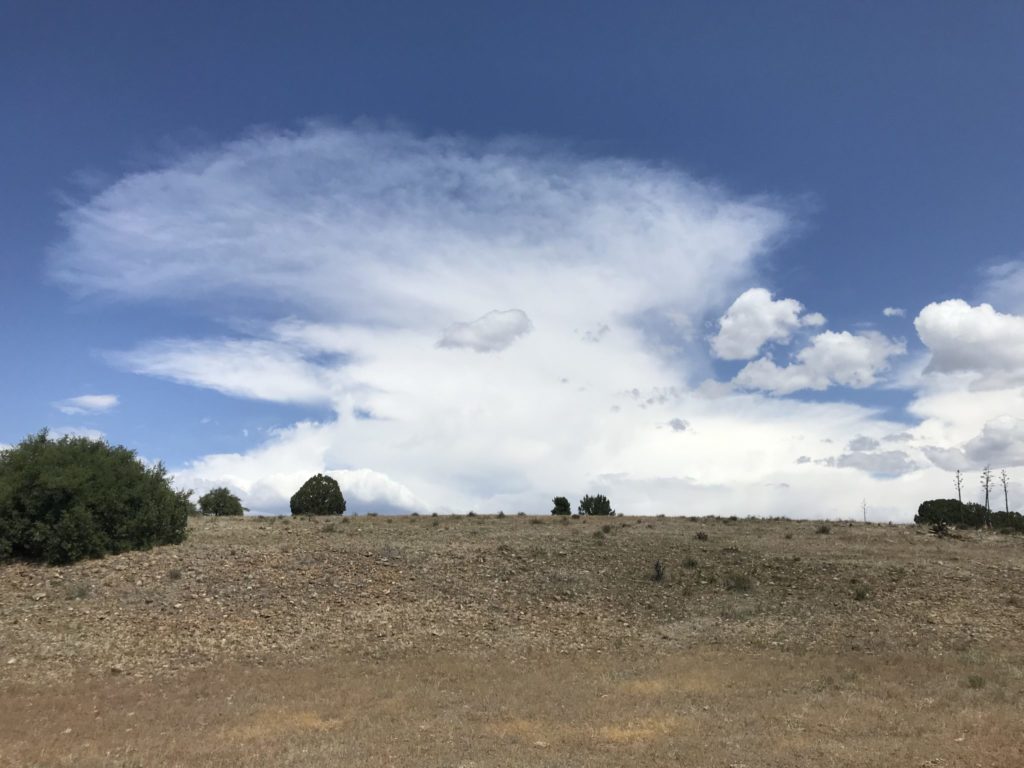- Home
- >
- Preservation Archaeology Blog
- >
- Obsidian Hunt
This post is one in our annual series of essays by our Preservation Archaeology Field School students. We invite you to continue following along with their experiences over the next few weeks.

(June 25, 2019)—We rode the RAV4 up along a single-lane county road, bumpily making our way into the rocky foothills of the Gila National Forest. This area was pretty far off the beaten path—according to our instructor Allen Denoyer, it was the remotest place we’d go during the entire field school.

Our reason for being there? Obsidian. It’s one of the best materials for flintknapping, and the place at the end of this road is one of the best sources of obsidian in the Gila River region. In order to learn how earlier peoples created their tools and weapons out of obsidian, we were going to start by discovering how and where to find it.
After the adventurous ascent, Allen pulled over by a field and parked the car. We grabbed food, water, and bags to store rock in, and headed out into the arid hills. Fifty steps away from the car, it was already clear that this place had a huge amount of obsidian. Black, glass-like shards were scattered throughout the fields and riverbeds, glimmering from different angles as we walked.
Allen began to explain to me and Esteban, my friend and fellow field school student, how to find the obsidian that’s best for flintknapping. The three of us needed to look for gray-black rocks, with a volcanic kind of texture, and large enough to make an arrowhead out of. Most importantly, he told us the flashier obsidian was unwieldy and explosive if flintknapped; the really good stuff looked duller on the outside and had to be hunted for among the other rocks.

More and more obsidian showed up as we got deeper into the fields, much of it good enough to bring with us to knap later. But amid all this great workable material, Esteban and I started to see tiny flakes of obsidian all around us that had already been shaped by flintknapping. Hundreds of small, gleaming shards that people removed in the process of creating arrowheads and tools hundreds or thousands of years ago.
It truly hit me then just how incredible this was: we were hunting for usable obsidian in this place, just as others had done here for millennia, with the remains of their work right in front of us here in the field. Each knapped flake that we examined on the ground was the work of someone who had been there many lifetimes ago.
After a few hours, we had collected enough obsidian to knap later and we headed back toward the car. We tracked through the fields and streambeds of obsidian flakes again. There’s something incredibly thrilling about seeing these artifacts from so long ago densely scattered, almost casually, across a field you’d easily wander through on a hike. More than anything else I’ve experienced here, this made me realize how close a connection there is between the past and the present.
